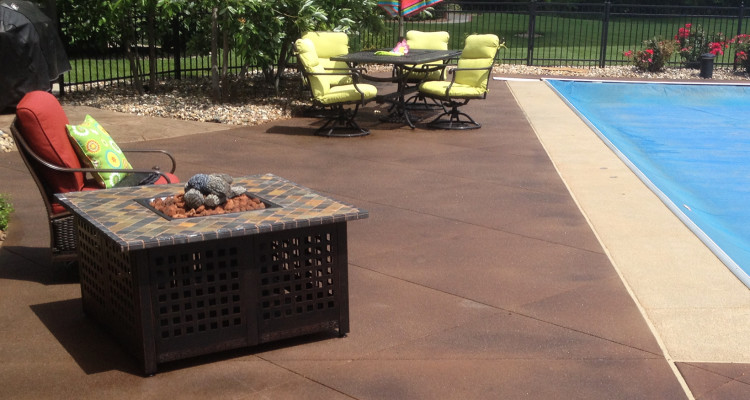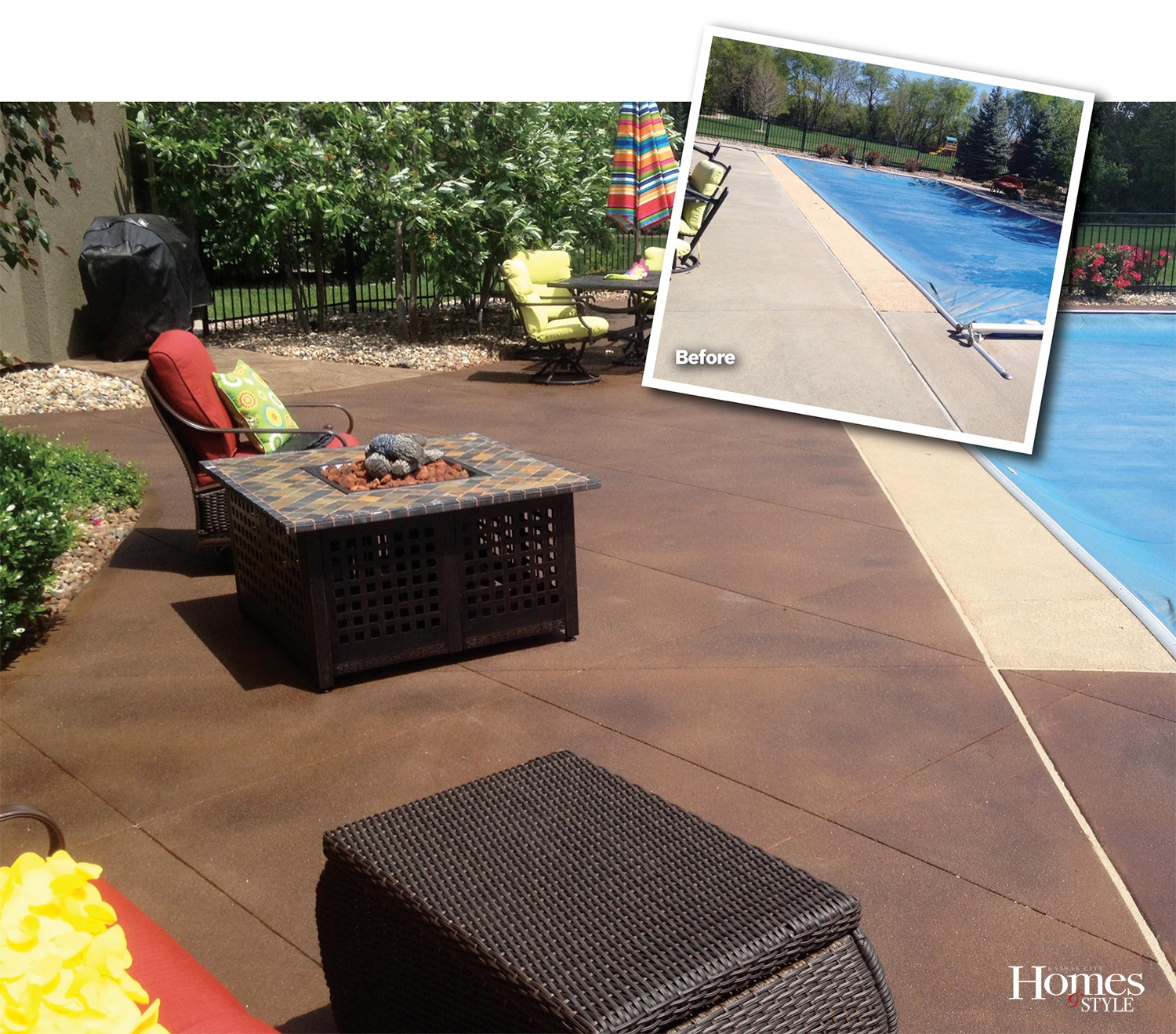Your pool is fashionable; so why shouldn’t your concrete deck be too? KCH&S had the opportunity to talk with the concrete sealing experts, Connie and Mike Hernandez from SealGreen – ReUse Concrete Sealing Specialists. They shared their tips on adding beauty to an otherwise artless area.
KCHS: What can be done to spice up a plain concrete patio and pool deck that has a dull appearance?
HERNANDEZ: To add some interest to these areas, color can be added to any existing concrete by just cleaning it well and then applying a color stain. Smith Color Stains offer over 33 colors which can be mixed and matched. These stains act just like water colors for your concrete, creating a beautiful look. After painting your patio, you will need to apply a sealer over the color to protect it. Plan on resealing every three to five years.
KCHS: What can be done for aging pool decks that are structurally sound, but look old and tired as the color is faded and the shiny surface is gone. Can they be made to look new again or does it need to be torn out and started over?
HERNANDEZ: The stamped concrete pool deck looks old and faded because the sealer that gave it the shine and protected the color has broken down and deteriorated. Most stamped concrete is sealed with acrylic-based sealers which are short life sealers subject to breaking down in extremes of temperature, i.e. too hot or too cold. I know nothing like that ever happens in the Kansas City area! There are a couple of things you can do to revive your stamped concrete. Sometimes all it needs is to be cleaned and a new sealer applied. Many times the color hasn’t really faded but appears that way because there is no sealer. The second option would be that the stamped concrete needs more color and then a sealer applied to protect the color. We recommend water-based stains that come in a large variety of colors and can even be custom mixed to achieve a one-of-a-kind color. There are brands that are pigmented so you will get the color you want (not dependent on a chemical-reaction such as acid stains do). We also recommend a professional quality water-based one-part epoxy sealer as it has a longer life – 3 to 5 years versus 12 to 18 months for an acrylic sealer. It has no odor, is ready-to apply and is totally environmentally-friendly. And don’t forget anti-skid. Any sealer application will make your pool deck more slippery.
KCHS: What if you have a stamped concrete pool deck that was resealed last year and within a month it was covered by white, blistery patches? What happened and can this be fixed?
HERNANDEZ: It is common to seal stamped concrete with acrylic-based sealers.These sealers have many inherent problems. They must be applied on clean, totally dry concrete when the temperatures are moderate (between 70 and 85 degrees) and not in direct sunlight. For optimal sealer protection, two thin coats should be applied 8 hours apart. Acrylic sealers cannot breathe so if there is any humidity encapsulated underneath the sealer, it will blister. If this has happened to your sealer, it is best to remove the sealer using a soy-based stripper, such as Blue Bear 600 Gl Coatings Remover, clean the surface and then allow it to thoroughly dry before applying a new sealer.
KCHS: With pool decks looking so attractive, aren’t your other concrete areas going to be jealous?
HERNANDEZ: Haha! Yes they are, but stain can be applied to your sidewalk and driveway too. It’s a great way to increase the curb appeal of your home.







